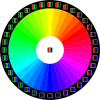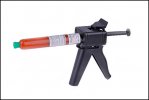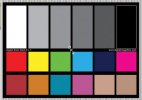Thanks much, very informative and detailed response, I really appreciate it! I've been tracking the other threads you pointed to as well, but asked the question about settings here as this is the only place I've seen you post them. I'm experimenting with a 12mm fixed lens. You mentioned that the settings above were the last for the varifocal - do you have the settings for your experiments with your 6mm? Maybe best to post in that thread to keep them "cleaner."
Thanks again!
I've basically been winging it with the color and exposure adjustments for the 4mm and 6mm lens and haven't kept screen shots or a record. I used the settings I arrived at for the 6mm as a point of reference to make further adjustments for the 4mm after swapping lenses. Giving you those numbers may just confuse the situation if they happen to be way off for your lens.
Each lens has a different inherent color profile regardless of its focal length. The settings you asked for that I used with my 6mm lens would not necessarily be of much help with your fixed 12mm lens.
My recommendation for now would be to use the
color settings in my screen shot above as a starting place. That should get you somewhere in the ballpark. Then make additional adjustments based on the results you are getting with your 12mm lens.
Keep in mind that I said "color" settings. The sharpness, exposure, contrast and saturation settings correspond specifically to my 2.8-12mm ƒ/1.2 lens and to my personal preferences. With those settings, start from zero and adjust accordingly based on the apparent and perceived requirements for your 12mm lens. A good technique here would be to make fairly extreme contrast, exposure and saturation adjustments to start with and this will give you a better understanding of what these settings do. Don't be afraid to make mistakes, you can always start over.
Here are a few RGB color corrections tips:
Looking at the chart below you'll see the RGB color wheel.
Note that BLUE is directly
opposite YELLOW.
Looking at the chart note that GREEN is directly
opposite RED.
So, if the image appears too YELLOW, add more BLUE, its opposite color on the chart. (Think - "Minus BLUE equals YELLOW - minus YELLOW equals BLUE")
If the image is too RED, you can subtract RED or add some GREEN. Often it will need a combination of both which is where this gets tricky. You may have to again change the BLUE after making RED and GREEN changes.
The goal is to achieve "white balance" where all three additive colors of light - RED-GREEN-BLUE are in proper mathematical proportions as represented by the white circle on the chart.
Often a white or grey object in your image (such as the wall of a building) will be helpful in determining whether you are anywhere near white balance.
With enough trial and error you can get pretty close but without an IR-cut filter it will never be perfect and it will change when the ambient light changes. What looks perfect on a cloudy day will look different under yellow sunshine.

In the RGB color system red, green and blue color are expressed (and adjusted) as 8-bit numbers in decimal form (0 to 255) in what is known as a color triplet, as shown below. Unfortunately, the Mobius doesn't give you a graphical representation or color sliders with a dynamic color chip or real time image to look at so you are stuck with just entering numerical values and that can make this effort more challenging, especially if you are not familair with the concepts.







